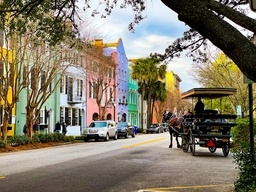Key Definitions You’ll Rely On
- Qualified property: generally tangible assets with a recovery period of 20 years or less (e.g., 5/7/15-year components identified in cost seg). The building shell itself doesn’t qualify.
- Placed in service: the asset/property is ready and available for its intended use (furnished, permitted if required, listed/available to rent). The first guest isn’t required if availability is documented.
- Material participation: To unlock the tax benefits, you also need to prove that you’re actively involved in running the business. The IRS calls this material participation. Find out more here.
Deadline Math for Your 2025 Return
To claim 100% bonus depreciation for 2025, you want qualifying 5/7/15-year assets to be:
- Acquired after January 19, 2025, and
- Placed in service by December 31, 2025.
Practical scheduling tip: There’s no statutory “buy-by” date, but you need runway to furnish, register/permit (if required), list, and document availability before year-end. Many investors target an early-to-mid-fall closing to leave 6–10 weeks for setup and paperwork.
Airbnb Rental Markets Set to Outperform in 2025
Download our comprehensive guide to learn:
- 📊 Which STR markets are set to outperform in 2025 based on revenue growth, occupancy trends, and supply shifts.
- 🏡 Where home prices are still affordable while generating high rental income.
- ⚖ Which cities have the best (and worst) STR regulations—so you don't get caught off guard.
- 🔎 The demand trends driving guest bookings and what amenities maximize revenue in each market.

A Realistic Close-to-Service Schedule (Example)
- Close: October/early November
- Weeks 1–3: Order furniture & appliances, schedule trades, handle STR registration/permit if needed.
- Weeks 2–5: Site work (parking/lighting/fencing), deliveries & installs, photography.
- Weeks 5–6: listing goes live; property is available for rent (placed in service).
- Weeks 6–8: Cost segregation inspection (onsite or virtual), documentation package, coordinate with Chalet expert for return support.
(With tight coordination and smooth logistics, a quicker sprint than 6-8 week is possible, but build slack for delays.)
2025 Urgency Checklist
- Qualify the Short-term rental
- Confirm an exception: average stay ≤ 7 days, OR ≤ 30 days with significant personal services, OR extraordinary personal services. Given the tight deadline, it is recommended to set maximum stay length at 7 nights in your Airbnb/VRBO listing. That way, even if you have no guests yet, the IRS can see your business model aligns with the ≤7-day rule. You can read more about the exception rules here.
- Material participation: plan your test (500-hour, 100-hour-and-most, or substantially-all) and keep a credible hour log. Once again, given the tight deadline, the easiest approach would the 100-hour test, as it is usually the easiest to hit. If you spend 12–18 hours per week on setup, furnishing, guest communication, creating the listing, marketing, etc., you’ll clear it by year-end even with the schedule suggested above. Just make sure to:
- Track hours in a contemporaneous log (spreadsheet, calendar, app).
- Keep detail (e.g., “11/12 – 4 hours – assembling furniture and photographing property”).
- Avoid having a PM or contractor spend more total hours than you.
- Lock the placed-in-service date
- Back-plan furnishings, permitting, and listing to hit “available for rent” by Dec 31, 2025.
- Maximize the bonus-eligible pool
- Prioritize furniture, appliances, AV, removable treatments, specialty fixtures, and site work for 5/7/15-year treatment where supportable.
- Model ~20%–30% reclass as a planning range (engineering study determines the final mix). You can find out more about different methodologies and their pricing here.
- Talk to a bonus depreciation expert for free and determine which study fits your needs the best and what to prioritize in the process of qualifying.
- Avoid pitfalls
- Limit personal use (>14 days or >10% of rental days can restrict deductions).
- If vendors (cleaners/manager) log more hours than you, consider a different material participation test. You can read more about this here.
- Remember: building shell doesn’t get bonus—the wins are in 5/7/15-year components.
- Check state conformity—many states don’t follow federal bonus timing.
Conclusion
For 2025, the reinstated 100% bonus depreciation makes timing everything. Close early enough to furnish and list, document placed-in-service by year-end, and pair your STR’s non-passive status with a cost seg study that surfaces 5/7/15-year assets. Execute the sprint well, and you’ll accelerate deductions, reduce current-year taxes, and meaningfully boost after-tax cash flow, without needing real estate professional status. If you still have some unaswered questions, you can read about some of our frequently asked questions here, or directly talk to a bonus depreciation expert, completely for free.
Important takeaways: You don’t need actual stays to place in service. You don’t need multiple bookings to prove the ≤7-day average. Your listing settings (max stay length, description, availability calendar) are evidence of intent. Over time, your booking history will reinforce this, but for the first year, documentation of listing setup is key.






